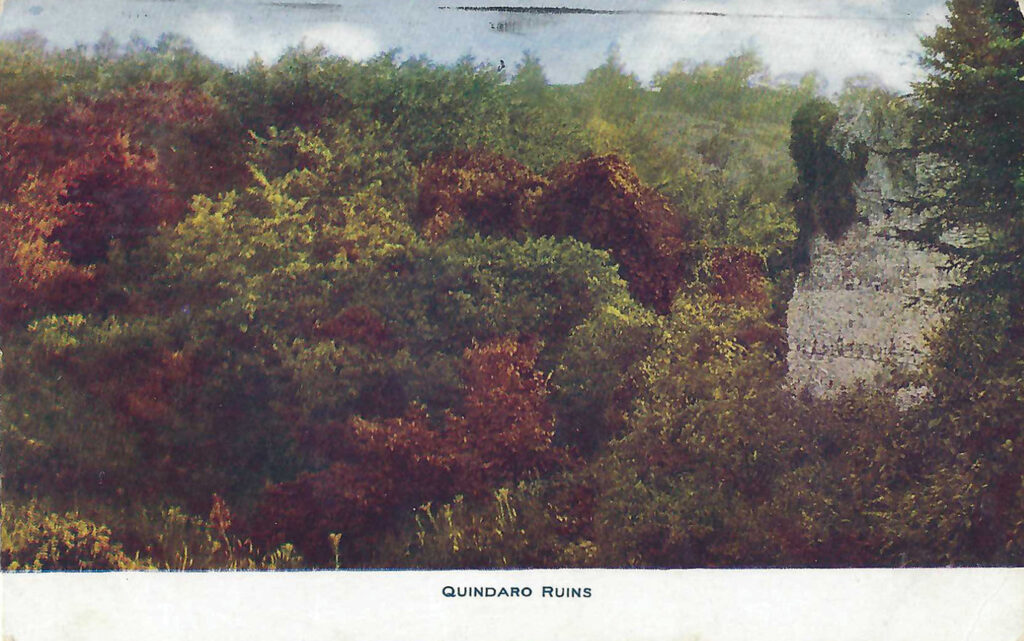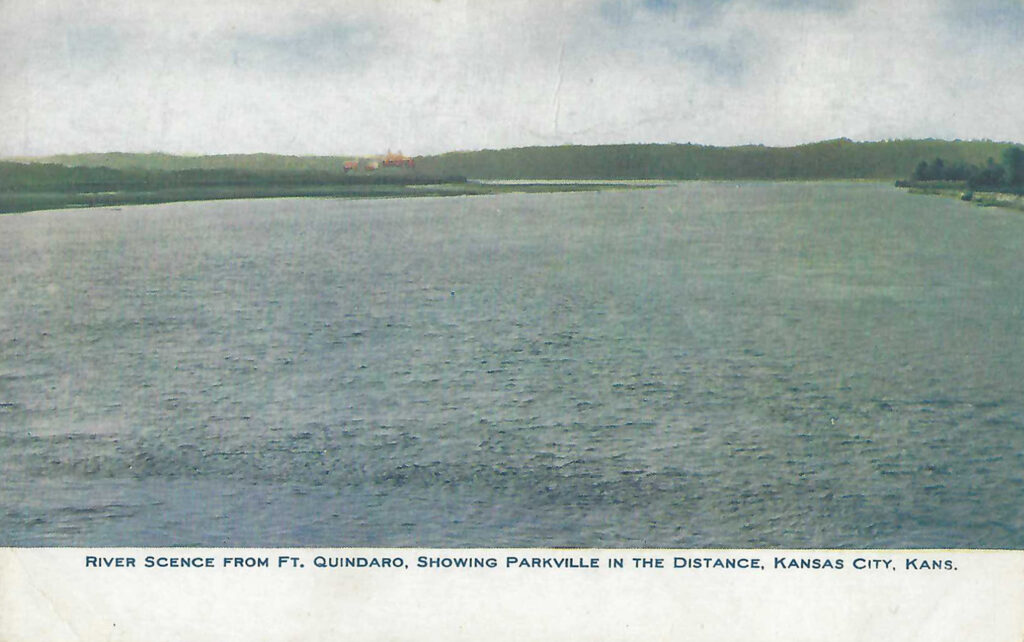

Michael Bushnell
Publisher
During Black History Month, our Historic Postcard column will spotlight locations and people important to Black History in the Kansas City region.
This week’s historic postcard is a rare glimpse of how the Quindaro Ruins looked circa 1910, prior to its recent recognition as a National Register historic site for being an important stop on the Underground Railroad during the Civil War era.
The town of Quindaro was purchased from the Wyandot tribe in 1857 by Adelard Guthrie. The name Quindaro was derived by Guthrie’s wife Nancy, a Tribal member. Translated it means “bundle of sticks.”
During the mid-1850’s, the border war was ravaging the Missouri-Kansas border. Anti-slavery partisans, anxious to move escaped slaves to Kansas, often found the Missouri River port towns hostile. A “portal” was needed, and the town of Quindaro was born. By the end of 1857, over 100 buildings had been erected, almost a quarter of them built of native stone, lending a sense of permanence to the boomtown. A ferry was established between Quindaro and Parkville, just upriver. The river town quickly became an important location for freed slaves who often settled in Quindaro as freedmen after fleeing Missouri, then a slave state.
Following the Civil War, however, Quindaro’s importance began to fade. Population began to decline despite the establishment of two important freedmen schools in the city. In 1911, a statue of noted Abolitionist John Brown was erected on the site of Western University, the first Black college west of the Mississippi River.
Population continued to decline and the town-site was eventually abandoned in the early 1950’s after the closure of the university in 1944. It became overgrown with trees, weeds and underbrush and was all but forgotten until the 1980’s when a proposed sanitary landfill threatened to destroy the old cemetery and the crumbling foundations of the remaining buildings at the town site.
A group of the town’s descendants teamed up with archeologists and historians to successfully halt the landfill project. In 2002, portions of the Quindaro town-site and cemetent were placed on the National Register of Historic Places.
Today, the John Brown statue stands in its original site in a memorial plaza designating the location of Western University. A public overlook from which one can view the archeological park and ruins of the old Quindaro town has been constructed, and a small museum holds artifacts from Quindaro’s days as one of the most important portals along the Underground Railroad.
The card was mailed on June 18, 1915, to Daisy M. Teffe of Bridgewater, NY. The written message reads: “Thanks for nice card. This is the ruins of an old fort within walking distance of our house. It has an underground tunnel up from the Missouri River. It is quite a historic place. Come again, Mrs. Bessie Frye, 1402 New Jersey, Kansas City, Kansas.”
Editorial Note: The Kansas City Public Library was of great assistance in this article. Their Missouri Valley Room is a treasure trove of local history and is referenced often in the completion of these Historic Postcard columns. For more information on the town of Quindaro and its role in the Civil War on the Western Border, visit the Kansas City Public Library’s web site at: https://civilwaronthewesternborder.org/encyclopedia/quindaro-kansas


















